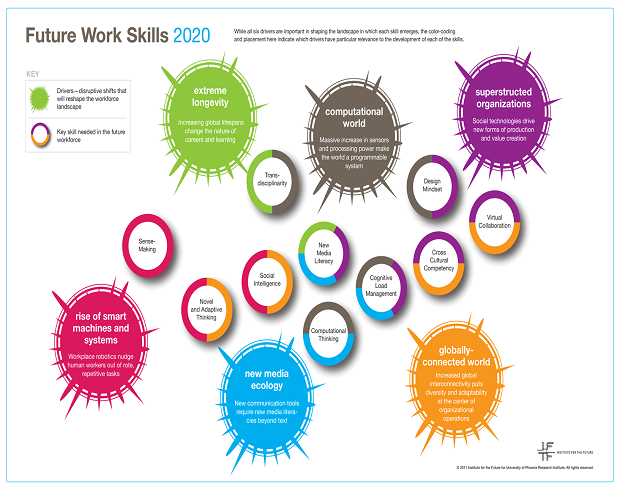“The illiterate of the 21st century will not be those who cannot read or write, but those who cannot learn, unlearn and relearn.” Alvin Toffler, Futurist
I recently attended a talk by a South African futurist, Craig Wing, who began his talk with the quote above. Learn, unlearn and relearn. Craig walked the audience through technological megatrends that should keep every single corporate leader’s nose glued to their smartphone. To begin with, a 2014 study of the average life span of American companies on the S&P 500 Index by Standard and Poor’s yielded interesting results. In 1955 the average life span of an American company on the index was 61 years. In 2016 the average life span was 21 years and by 2027, projections based on current data estimate that the average life span would be 14 years. There is no better evidence of how this happens than outgoing Nokia CEO Stephen Elop’s quote in 2013 following the takeover of the company by Microsoft: “We didn’t do anything wrong, but somehow we lost.” The seemingly defeatist statement understated the myopic nature of the firm as it cruise controlled itself from relevance while Apple and Samsung were flat footing the accelerator in the smartphone space.
Another industry at a confluence of shifting consumer preferences and channel disruption is the retail industry. Singles Day in China falls on November 11th every year, or, more aptly 11.11 as the digit one purportedly looks like a solitary individual. The festival is a product of Chinese social culture amongst the youth to celebrate the fact that they are proud of being single. It has evolved into the biggest online shopping day in the world and a wonderful thumb up the nose to the more insular Valentine’s Day culture. Alibaba, the Chinese largest online shopping portal has registered phenomenal growth on this day alone. Sales in 2013 were US$ 5.8 billion, $9.3 billion the year after [when Facebook’s annual revenues were US$ 12.5 billion], $14.3billion in 2015 and tripling the 2013 numbers to a whopping $17.8billion in 2016. I forgot to mention one notable point: These were sales taking place within 24 hours, translating into processing numbers of 175,000 orders per second and 120,000 payments per second on their own payment platform Alipay. In the digital payments world this is the great grandmother of server challenges!
A pivotal part of Alibaba’s strategy is vertical integration, essentially ensuring a transaction gestates from an online conception into a physical delivery. Consequently 1.7 million couriers from 4,000 different retailers shipped 657 million packages out of 5,000 warehouses as a result of Singles Day 2016.
A Forbes magazine article covering the spectacular sales summarized the phenomena thus: A day in China is now bigger than a year’s online sales in Brazil.
Here’s the clincher: 82% of those sales were on smart phones!
The average life span of companies is shrinking largely due to the colossal analogue thinking that straddles boardrooms. Our “normal” as we know it no longer holds true, not when we can drive across Kenya from Mombasa to Busia carrying nothing but a toothbrush, an empty wallet and a mobile money filled phone while never lacking food, fuel and shelter.With the youth bulge that all African economies are facing, the current and future customer for a Kenyan business is more likely to be under 35 years of age, and doing most of their utility payments, banking, social interaction and entertainment off a smart phone. They are the ones who will ensure that Kenyan companies’ life spans shrink unless the corporate thinkers unlearn their current ways and relearn the rapidly shifting customer preferences. The unlearning is not only limited to customer preferences though, a highly differentiated approach will have to be taken towards the employee value proposition too. Employees are no longer in it for life, that’s been left to the KANU stalwarts. Keeping youthful talent is less a question of how much you pay, and more a debate of whether your company has a cause they believe in. Because the minute the values are diametrically opposed to what management actually does, many of these young folk walk. The question to ask yourself this week is, can you learn to unlearn?

 carolmusyoka consultancy
carolmusyoka consultancy
 @carolmusyoka
@carolmusyoka

